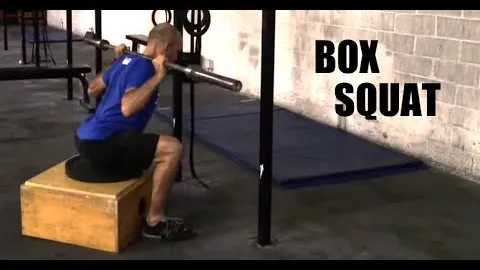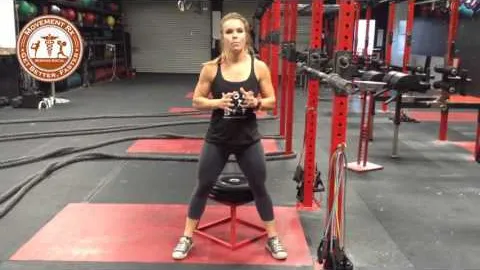




The box squat is a highly effective exercise that can help you build strength and muscle in your lower body. It is often used by powerlifters, athletes, and bodybuilders to improve performance, increase muscle mass, and develop explosive power. In this article, we will delve into the benefits of the box squat, how to perform it correctly, and how it can be incorporated into your training routine.
The box squat is a variation of the traditional squat exercise, where you use a box or bench to assist with your form and range of motion. By sitting back onto the box, you are forced to control your descent and focus on generating power from a dead stop at the bottom position. This exercise primarily targets the lower body muscles, including the quadriceps, hamstrings, glutes, and calves, while also engaging the core and upper body for stability.
Increased Strength: The box squat is excellent for building strength as it allows you to lift heavier weights than you may be able to with a traditional squat. The dead stop at the bottom position allows you to reset and generate more force on the way up, aiding in overall strength development.
Improved Technique: Sitting onto a box helps you learn proper squat mechanics by using consistent form and depth. It teaches you to activate the correct muscles and maintain proper hip and knee alignment, leading to better technique and reduced risk of injury.
Enhanced Power Output: The box squat is a great exercise for developing explosive power. Generating force from a dead stop at the bottom position helps to improve your power output, which can translate to better athletic performance, such as jumping, sprinting, and throwing.
Added Variety to Training: Including the box squat in your training routine can provide a change of stimulus and prevent plateauing. By incorporating different squat variations, you can target different muscle groups, improve weak points, and promote overall muscle development.
To perform the box squat correctly, follow these steps:
Set up your box: Position a sturdy box or bench behind you at a height that allows your hip crease to descend just below parallel when seated.
Assume the starting position: Stand with your feet slightly wider than shoulder-width apart, toes pointed slightly outward. Keep your chest up, shoulders back, and core engaged.
Initiate the movement: Begin by pushing your hips back, as if you were sitting on the box behind you. Keep your weight on your heels, maintain a neutral spine, and descend until your buttocks make contact with the box.
Pause and control: Once you reach the box, pause for a brief moment while maintaining tension in your muscles. This is the dead stop position that characterizes the box squat.
Drive through your heels: Explode upward by driving through your heels, engaging your glutes, hamstrings, and quadriceps. Extend your hips and knees simultaneously until you return to the standing position.
Repeat: Complete the desired number of repetitions while maintaining proper form and control throughout the movement.
To incorporate the box squat into your training routine, consider the following tips:
Warm-up Properly: Before attempting heavy box squats, ensure you warm up thoroughly by performing dynamic stretches and mobility exercises to prepare your muscles and joints for the workout.
Start with Bodyweight or Light Weight: If you are new to box squats, practice the movement without weights or with light dumbbells to perfect your technique and become comfortable with the range of motion.
Gradually Increase the Load: As you progress, gradually increase the weight used for box squats. This will help you build strength and muscle mass over time.
Vary Box Heights: Experiment with different box heights to target specific muscle groups and increase the difficulty of the exercise. Higher box heights focus more on the quadriceps, while lower heights emphasize the glutes and hamstrings.
Combine with Other Exercises: Include the box squat as part of a well-rounded lower body workout routine. Combine it with other compound movements like lunges, deadlifts, and step-ups to train the legs from various angles and maximize overall muscle development.
The box squat is a versatile and effective exercise that can significantly contribute to your strength and muscle-building goals. By incorporating the box squat into your routine, you can improve lower body strength, develop explosive power, enhance technique, and add variety to your training regimen. Remember to maintain proper form, gradually increase the weight, and listen to your body to avoid overexertion or injury. Start incorporating the box squat into your workouts and reap the benefits of this powerful exercise!
If you're looking for a gym, fitness club or yoga studio, you've come to the right place.
You can find information about gyms in your area. Browse catalog of gyms and find gyms with classes which are you looking for.
On gym page you can find simple information like address, phone or website. You can find list of available classes. You can check availability of personal training or small group classes. On place page you can also see information about open hours.
You can find gyms near you with amenities, courts, studios and equipments.
Use our map to find gym at your city or district.
In Gym Navigator you can find list of exercises with movies for many body parts.
You can browse exercises catalog and find exercises the best of you.
You can also find exercises grouped into workout plans, which you can use to improve you body. Each routine show you exercises one by one and give you possibility to count you progress and count down rest time.